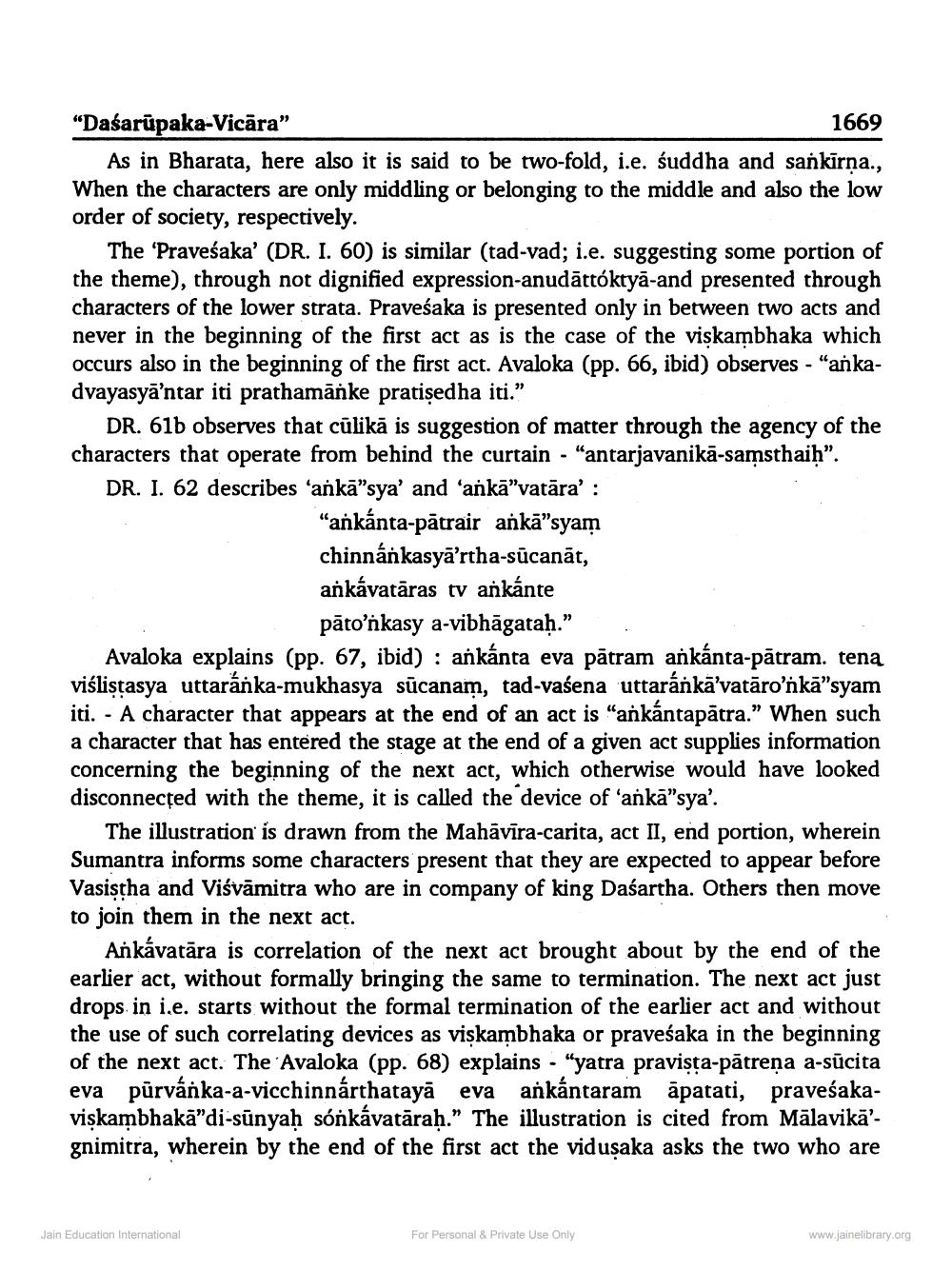________________
"Dasarūpaka-Vicāra"
1669 As in Bharata, here also it is said to be two-fold, i.e. suddha and sankirna., When the characters are only middling or belonging to the middle and also the low order of society, respectively.
The 'Praveśaka' (DR. I. 60) is similar (tad-vad; i.e. suggesting some portion of the theme), through not dignified expression-anudāttoktya-and presented through characters of the lower strata. Praveśaka is presented only in between two acts and never in the beginning of the first act as is the case of the viskambhaka which occurs also in the beginning of the first act. Avaloka (pp. 66, ibid) observes - “ankadvayasyā’ntar iti prathamāńke pratiședha iti.”
DR. 61b observes that cūlikā is suggestion of matter through the agency of the characters that operate from behind the curtain - "antarjavanikā-samsthaih". DR. I. 62 describes 'ankā"sya' and 'ankā”vatāra':
"ankánta-pātrair ankā”syam chinnánkasyā’rtha-sūcanāt, ankávatāras tv ankánte
pāto’nkasy a-vibhāgataḥ.” Avaloka explains (pp. 67, ibid) : ankánta eva pātram ankánta-pātram. tena viślistasya uttaránka-mukhasya sūcanam, tad-vasena uttaránkā'vatāro'nkā”syam iti. - A character that appears at the end of an act is "ankántapätra." When such a character that has entered the stage at the end of a given act supplies information concerning the beginning of the next act, which otherwise would have looked disconnected with the theme, it is called the device of 'ankā"sya'.
The illustration is drawn from the Mahāvīra-carita, act II, end portion, wherein Sumantra informs some characters present that they are expected to appear before Vasiştha and Viśvāmitra who are in company of king Dasartha. Others then move to join them in the next act.
Ankávatāra is correlation of the next act brought about by the end of the earlier act, without formally bringing the same to termination. The next act just drops in i.e. starts without the formal termination of the earlier act and without the use of such correlating devices as viskambhaka or praveśaka in the beginning of the next act. The 'Avaloka (pp. 68) explains - "yatra pravista-pătrena a-sūcita eva pūrvánka-a-vicchinnárthatayā eva ankántaram āpatati, praveśakaviskambhakā"di-sünyah sonkávatārah." The illustration is cited from Malavika'gnimitra, wherein by the end of the first act the viduşaka asks the two who are
Jain Education International
For Personal & Private Use Only
www.jainelibrary.org




